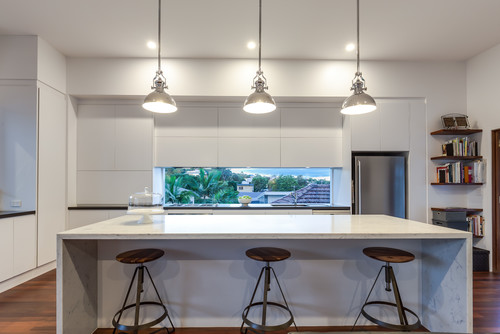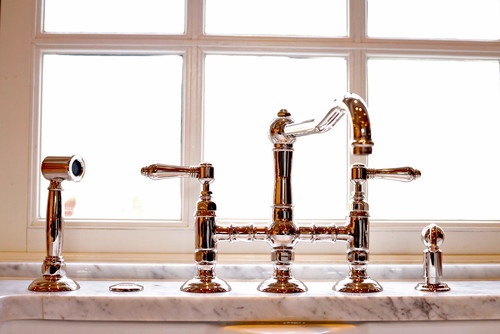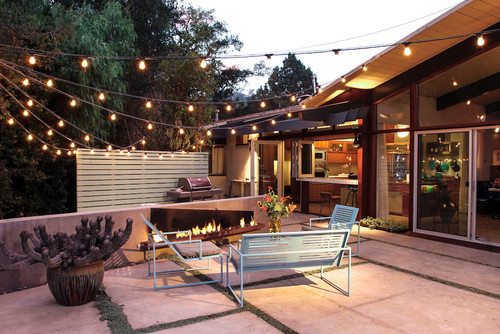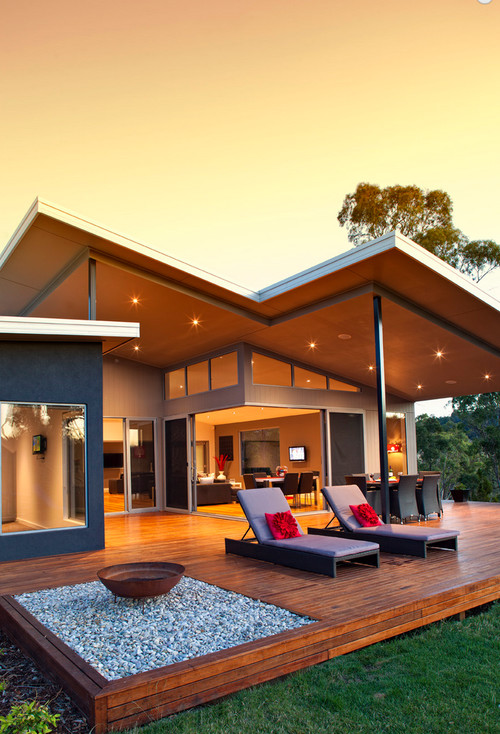How long does a kitchen remodel take? On average, four to eight weeks—long enough to become sick to death of takeout food options in your area. But it doesn’t have to be that way. These days, a kitchen remodel can be done in the far shorter time span of a mere three days. That’s right! Three. Days.
OK, maybe you can’t do a full gut renovation in that span of time, but you can certainly give your kitchen a whole new look over a long weekend. Here’s how, with renovation tips and cool products that are easy (and cheap) to install.
Give your cabinets a face-lift
Many homeowners love their kitchen layout, but they simply desire an updated look. Enter the cabinet makeover. Most existing cabinet boxes are in excellent condition; it’s just the exterior color that’s outdated.
By leaving these cabinet boxes intact and building off of them, homeowners get a whole new look in three to five days.
You can simply paint the existing kitchen cabinets. Or you can swap out just the doors.
Another option is the Home Depot Cabinet Makeover program. Here’s how it works: “The makeover keeps the base cabinets in a kitchen, but includes new custom doors, drawers, and drawer fronts, hinges, and glides,” says Eva Rich, Home Depot’s interior program merchant. “Existing cabinet boxes are refaced via a lamination refacing process.”


The best part about all three options? You’ll have full use of your kitchen before and during installation.

HomeDepot.com
The cost: The average cost to repaint cabinet doors runs about $1,000. To buy new ones, prepare to spend around $70 to $100 per door. Ikea’s Bodbyn door costs $80 and has a beveled panel for a traditional look.
A cabinet makeover varies by layout and desired features, but the cost is typically only a few thousand dollars. (Remember, it generally costs $30,000 for new cabinets.)
Time it’ll take: Painting cabinets can take three days, a lot of which is drying time allowing for other kitchen work to get done. Swapping out doors takes a half-day. Plan on a few hours to meet with experts in your home in the beginning of a cabinet makeover. Then once the new doors arrive, installation takes about three to five days.
Upgrade your countertops
Don’t have the time or cash to replace your laminate countertops? Paint them instead! Or you can add adhesive onto your current countertops that looks just like real slab granite, only without the high price.
“It’s so simple, yet adds a realistic granite look that elevates your counters for a fraction of the cost,” says Sophie Kaemmerle at real estate site NeighborWho.com.
The cost: To paint countertops, you need to spend about $100 for sand paper, primer, paint rollers, a gallon of acrylic interior paint, and polyurethane seal. Granite adhesive typically costs $40 to $120, which is way more affordable than real slab granite. It’s also a breeze to install—almost the same as applying contact paper, but at a much higher level of quality.
Time it’ll take: About 2 hours for the work. Several days for the paint to cure.
Install new hardware

Photo by Elizabeth Lawson Design.
“Unscrew old hardware and take one knob or pull to your local hardware store,” says Megan Neugebauer of letspaintfurniture.com. Have a store attendant help you measure the length between the holes. This will ensure your new hardware will match up perfectly with your existing cabinet holes.
“You can add blasts of color by choosing knobs in the color du jour, like navy and dark green, or go whimsical and quirky with animal figures,” says Sayre Ziskin of SVZ Interior Design.
The cost: Small drawer pulls may cost as little as $5, although the price can rise depending on the size and finish. An 8-inch Edgecliff Pull in natural brass from Schoolhouse, for instance, costs $44.
Time it’ll take: Plan for six hours total. Shopping will take several hours, as will installation.
Add a peel-and-stick backsplash

HomeDepot.com
Adding a peel-and-stick backsplash is as simple to install as it sounds.
“It’s a great way to easily and quickly update your decor,” says Home Depot’s Matt Kunkle. Just make sure the tiles you select are heat- and moisture-resistant.
The cost: A 4-pack of Metro Campagnola Mosaic Wall Tile Backsplash that covers 2.20 square feet costs $26.95.
Time it’ll take: 2 to 3 hours.
Upgrade your lighting

“Changing a light fixture in your home can take less than 20 minutes and yet makes some of the biggest differences to a space,” says Mark Luongo, owner and project Manager at Luongo Electric.
Many older homes have small fixtures, leaving rooms feeling dark and gloomy.
By replacing them with a new, higher-output LED fixture, the color of your walls can appear different and the wood grain in your furniture can pop. Also replace old or broken plugs and switches.
“There is nothing uglier—and more dangerous—than broken counter plugs and stained cover plates,” says Luongo. For a couple of dollars a unit, replacing your plugs and switches makes your home safer and gives it a new look.
The cost: Price varies, but to give you an idea, an Amanda 3-Light Kitchen Island Pendant costs $153.99.
Time it’ll take: Plan for 20 to 30 minutes a fixture and about 10 minutes per outlet. Always hire a licensed electrician if you are not comfortable dealing with electricity.
Replace your faucet

Photo by Kitchen Kraft
“Hardware styles and even the metals used can date your kitchen today,” says J.B. Sassano, president of Mr. Handyman, a Neighborly company.
Bring your sink up to date with a new chrome, stainless-steel, brushed-aluminum, or even a dark nickel sink faucet. This small change will do wonders for your kitchen’s appearance.
The cost: A chrome Project Source pull-down kitchen faucet goes for $79.
The cost: A chrome Project Source pull-down kitchen faucet goes for $79.
Finally, floors
Consider putting luxury vinyl plank, or LVP, flooring over a worn-out tile or hardwood kitchen floor.
The new LVP flooring looks just like wood but is 100% waterproof and scratch-resistant. It is also easier to install, so it’s less expensive than previous options.
Cost: The above Woodacres Oak flooring is available at Home Depot at $59.98 for a case that covers 20.06 square feet.
Time it’ll take: You can lay an LVP floor in a 10-by-20-square-foot room in 2 or 3 hours.
Contact The McLeod Group Network at 971.208.5093 or admin@mgnrealtors.com for ALL your Real Estate needs!
By: Realtor.com, Margaret Heidenry









